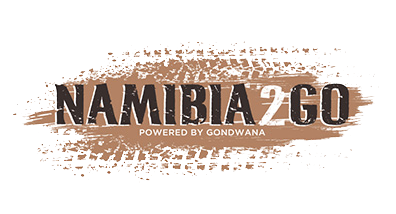I first heard about these renderings five years from Hugo Leggatt, physics teacher, hobby historian and author of the definitive book on the history of Wilderness. I was referred to him to learn more about the town and somewhere in our discussion the paintings were mentioned in passing. It stayed with me until I finally made my way back to Hugo’s home earlier this year to hear the rest of the story.
Hiking had led Hugo to explore on foot many of the nooks and crannies of the Swartberg, Outeniqua and Langeberg mountain ranges, mountains in a 100km radius around Oudtshoorn in the Western Cape that aren’t usually associated with rock art. Over time Hugo noticed that among the other more familiar representations were images that were unusual, figures with wings or fins. What were they?
When I paid a visit to the Fransie Pienaar museum in Prince Albert, I came across a photo of one of the most well-known rock painting from Ezeljagdspoort, Langkloof, with a panel of these intriguing fork-tailed images.
A few days later I was sitting with Hugo in his study in Wilderness and my excitement bubbled over. I had the chance to ask him. “Could they be mermaids?” And so began one of the most fascinating discussions I’ve had in a while. As the birds called outside and the forest glimmered we tried to make sense of images from the days of yore when hunter-gatherers travelled through the area and painted on overhangs with red and yellow ochre, charcoal and raptor faeces. What were they? He looked at me and smiled. “We don’t know,” he said. “The people who made them are long gone from this area.”
“We are taught what we believe and have rational explanations about what we see,” he explained. He had noted creatures with forked tails at over twenty sites and looking at the arm length to body ratio, some look like swifts flying through the sky and others look like fish swimming underwater.
It is now understood, thanks to people like rock art guru David Lewis-Williams, that the San (Bushman) medicine men or shamans went into trance to ask the gods for protection, food, rain or healing for their people. Many images chiselled or painted on the rock are therianthropes, half-human half-animal, painted in a trance state as the worlds of the physical and spiritual merged, or afterwards as memories. There are infinite possibilities for what may be seen in a trance state and how you might explain them when you come out of trance. This means that the images could well be the shamans’ interpretation of their trance journeys.
At the same time, we are increasingly being made aware that beyond our physical everyday world there are many dimensions that we are unaware of. In our expanding universe, scientists have no answers as yet for inexplicable energy sources. Never mind the spirit world. “Sometimes dreams are very vivid,” Hugo said. There are altered states of consciousness, when you can feel that you can do things that you couldn’t do in an ordinary state, such as fly, or swim underwater like a fish. And many of us who have whizzed through the air or flapped our wings in dreams understand this. So, perhaps they are other-worldly beings after all.
And mermaids seem to fit in right there with the unknown and all that’s hidden between worlds. Mythology and folklore worldwide are filled with sightings and stories of half-women half-fish creatures. In southern Africa ‘Watermeide’ (water maidens) are believed to live in rock pools and Mami Wata (Mammy Water), the water spirit, is known and revered throughout Africa. Some people swear that they have seen mermaids. And we are none the wiser if they have seen something that resembles a female form like a burnt tree or if they have a sixth sense and can see beyond our physical world into other realms where fairies and nature devas exist. “Is it something that exists or is it a construction of the mind?” Hugo queried.
We went back to the beginning of our conversation and took another look at the photos that Hugo had taken of San paintings. Were the fork-tailed beings fish or birds?
“I don’t think it’s ‘either’ ‘or’, I think it’s both,” he said. And then, grinning, added: “But I’m open to something else.”
I left him with thoughts swimming - or flying - around my head.
The mystery remains and perhaps that is the beauty of it.


.png)
.jpg)
.jpg)




.png)

SUBMIT YOUR COMMENT